What Type Of Magnolia Tree Do I Have?
Take note that there are over 200 types of Magnolia trees. Each one will be different. But there are things in each one that make it easier to tell them apart.
Table of Contents
How To Identify Your Magnolia Tree?
Whether evergreen or deciduous, you can identify your Magnolia tree through its life cycle. Also, other ways are their characteristics such as the size, flowers, and leaves.
Magnolias are known for their beautiful scent and huge flowers. Some species grow to be about 1 foot across. They have different colors, like yellow, white, purple, and pink. Each flower has any stamens on a long or spiraling stem that goes through it.
Some Magnolia trees have big leaves, and you should pay attention to how big they are. They are dark, glossy green on the topside, and lighter, more subtle colors appear on the bottom. The leaves have short stems and wavy edges.
Look at the bark of the Magnolia tree. It is very thin and smooth, and it covers a layer of cork that is very hard to burn and is heat-resistant, so it is very safe. The twig has a lot of bundle scars (marks left on the twig when the leaf breaks off).
It’s time to look at the fruit of a Magnolia tree. One to two seeds emerge from pod-like containers that look like cones during ripeness. The dark red seeds grow in cone-like groups. For birds are a source of food and help spread the seeds. The tree’s root structure looks like a rope. It has one long taproot and isn’t branched like most trees are.
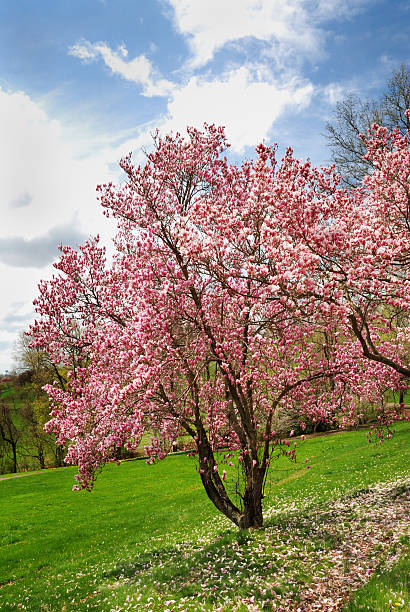
What Type Of Magnolia Tree Do I Have?
It is in the Magnoliaceae family. They’re trees and shrubs that are both deciduous and evergreen, and they can best be called “magnificent.” They have white, pink, red, purple, or yellow flowers. Among Magnolia trees, there are many different types of leaves and plants. They are evergreen or deciduous. They aren’t usually eaten by deer, but sometimes they do. (A good thing for gardeners who have yards where deer are known to eat.)
When it comes to magnolias, different types grow in different places. Most can grow in full sun or partial shade with regular water.
Tree Types
Evergreen Magnolias
The evergreen magnolias add a burst of color to the dreary winter doldrums with their leathery leaves. They let you enjoy a leafy tree all year long. All kinds of plants aren’t good everywhere. Still, most magnolias are pretty adaptable and can grow in warm to temperate places. They range in height from 60 feet down to 30 feet.
Deciduous Magnolias
There are still flowers on the plant, but the leaves have not yet come out. This means it is a deciduous form. They look better because there aren’t any leaves to hide them. This is true even for varieties that have leaves simultaneously as they flower. The effect is startling and almost stark, but it lets the viewer enjoy the flowers easily.
These trees come in a wide range of shapes and sizes. It’s possible to find more than 40 different types of deciduous magnolia. They range in height from 80-foot monsters to tiny 10 feet tall.
Varieties of Magnolia Trees
Evergreen Magnolia Varieties
Southern Magnolia
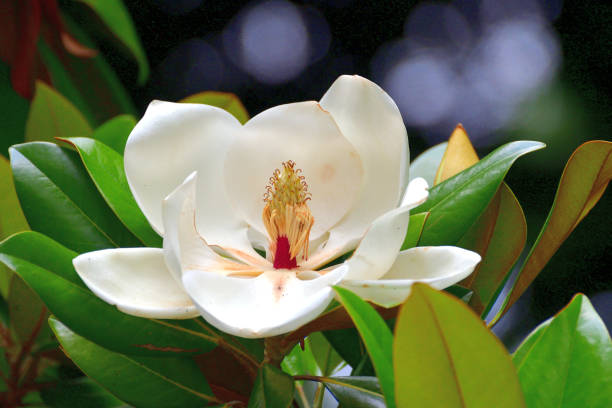
The southern magnolia is probably the plant that comes to mind when people think of magnolias or read about them in novels set in the antebellum South. This magnolia blossom is the official state flower in Louisiana and Mississippi. Large evergreen trees such as the southern magnolia necessitate a lot of space. In midsummer to early autumn, large, leathery elliptical leaves can grow up to 10 inches long, and the white flowers can reach a diameter of 12 inches. Magnolias, in general, prefer full sun, but this particular magnolia thrives better in partial shade. It grows up to 60-80 ft tall and has a spread of 40 ft.
Little Gem Magnolia
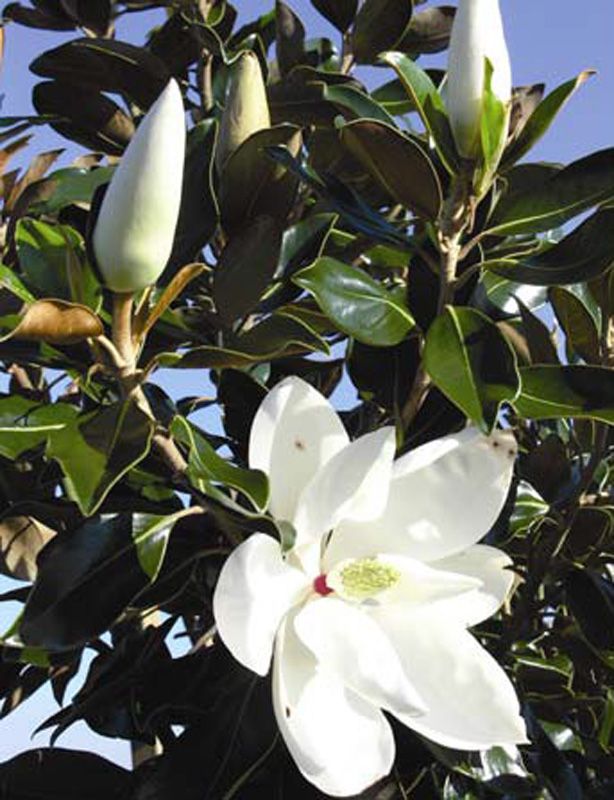
A dwarf magnolia was the first to bloom, but it will still reach a height of 10 meters despite its diminutive stature. It can be trimmed to a manageable height as a tall hedge, but it also works as a focal point.
Kay Parris Magnolia
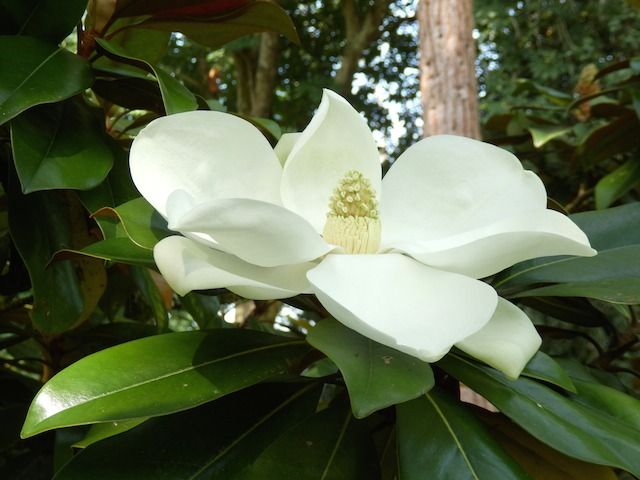
Author Kay Parris created the character ‘Kay Parris.’ Magnificent foliage, a long flowering season, and better cold tolerance are some of the advantages of Magnolias in Australia. Their glossy, orange undersides contrast sharply with the rest of the plant’s foliage. Smaller than the ‘Little Gem’ Magnolia, the ‘Kay Parris’ Magnolia only reaches 6-9 meters. It has a strong structure and maintains its shape as a specimen tree, making it an excellent choice. Growth rate greater than that of “Little Gem.”
Teddy Bear Magnolia
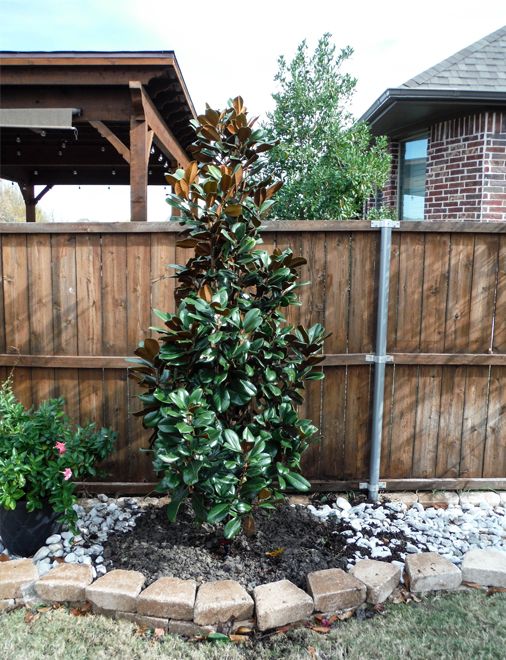
Magnolia’ Teddy Bear’ can now be purchased in Australia. It has rounded, dark green leaves, cup-shaped, and densely packed together, making it a smaller variety. Even though it will grow to 6m, pruning in the winter can easily keep it more compact, just like ‘Little Gem’ and ‘Kay Paris.’ They’re about 20 centimeters tall and white.
Exmouth Magnolia
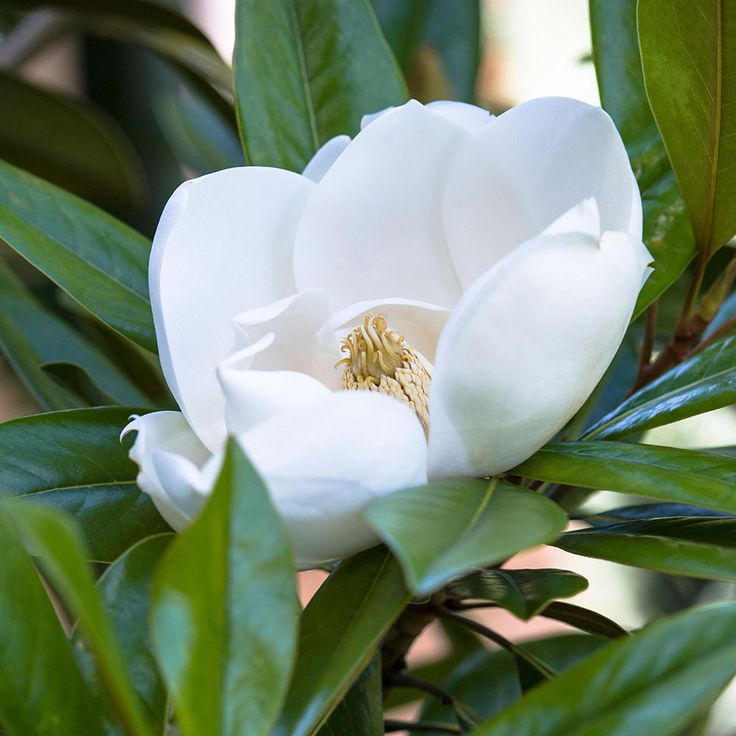
Its maximum height and width are both 12 meters. Magnificent in size, but not as prolifically blooming as the Magnolia “Little Gem.” Exmouth magnolias are distinguished by their pyramidal to rounded crowns and long, straight trunks. Flowers are 25 cm wide and have a strong scent in mid-spring, summer, and fall. They bloom on thick, thorny stems at the tips. The bowl-shaped blossoms’ morning and night opening and closing last for two to three days. Taking a decade to bloom. After that, large, rose-red seedpods with cone-shaped fruits appear. Open pods are common places for seeds to dangle. Oblong-elliptic leaves of dark green with a brown felt underside measure 25 cm long. It was invented in the early 1800s by John Colliton of Devon.
White Champaca

A fast-growing medium-sized evergreen tree in its native habitat. As much as 30 meters is possible for this animal under ideal circumstances. The trunk’s bark is extremely smooth and silvery grey in color. Tepals in this plant are waxy, long, and narrow, encircling the green pistil. Approximately 5cm in diameter, the flowers are pale cream or ivory white. In the evening, the scent is at its strongest. They still have their scent even after being picked.
Port Wine Magnolia
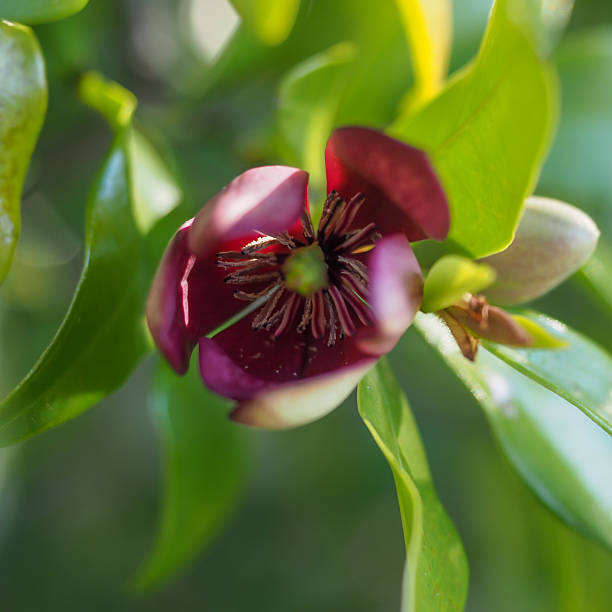
In acidic and alkaline soil, it is a large evergreen compact tree. The danger posed by black soot cannot be overstated. The smelly flowers make it popular as an ornamental plant in many gardens. If you’re looking for something a little more subtle in color and scent, look no further. Leathery dark green leaves measure 10 cm long. In Shanghai, this plant is used as an evergreen hedge.
White Caviar Magnolia
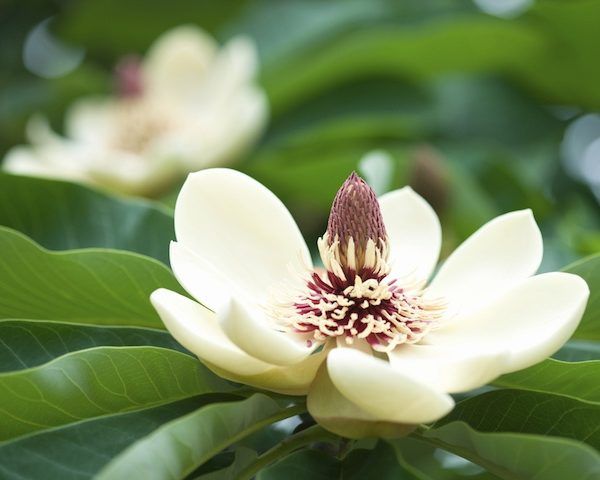
Medium-sized, glossy green round leaves make Magnolia grandiflora one of the most popular ornamental trees in the world. Flowers like the 20 cent coin-sized yellow tulips bloom in the spring and summer have a lovely setting here. Compact, round-shaped shrub. Suitable for hedging up to a height of two meters. It can be cut easily, making it an excellent choice for driveway planting. It is possible to shape plants in containers by snipping them at the base.
Sweet Michelia
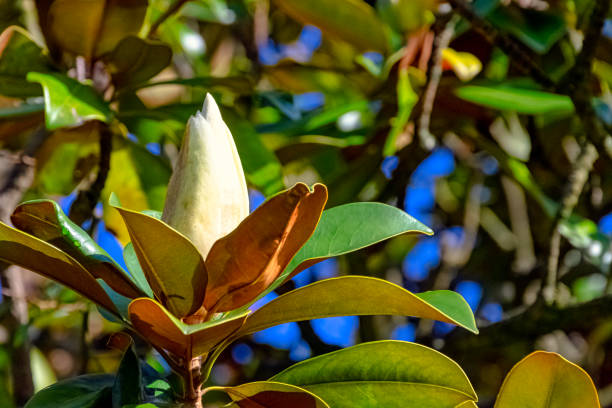
This tree produces many white flowers with a strong scent during the fall and winter. Dark green, long-oval leaves with a fuzzy back cover this plant. Beautiful fragrant creamy-white flowers bloom from the ground up in spring, and their scent is extremely potent. Because of how it grows, this tree can be used for hedging, screening, or even as a centerpiece. As it grows, it will become more widespread. It thrives in well-drained humus and slightly acidic soil, and it grows quickly in either full sun or part shade. It reaches a height of 9 meters and a circumference of 6 meters at its base.
Smaller Evergreen Magnolia Varieties
Sweetbay Magnolia
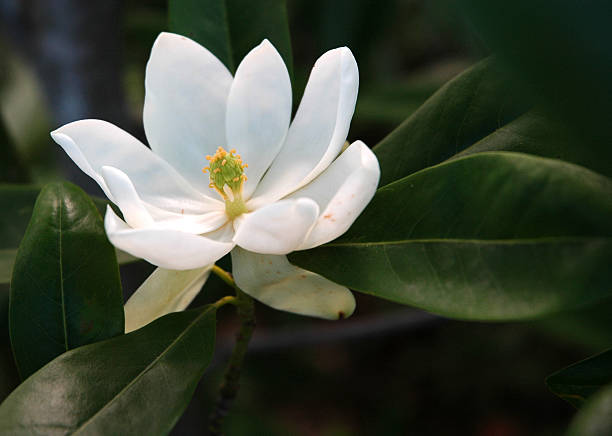
If you live in a certain area, this plant may also go by beaver, swamp, laurel magnolia, or swamp magnolia. In cold places, the sweetbay magnolia is usually a shrub with many branches that dies back in the fall. It is usually an upright tree that stays green all year long in warmer places. It is a great plant for wet or has clay soil. It has white, waxy flowers that appear in the middle of the summer to the beginning of the fall. The shiny green leaves have silvery undersides. It grows to 10-20 ft tall 10-20 ft wide.
Scented Pearl Magnolia
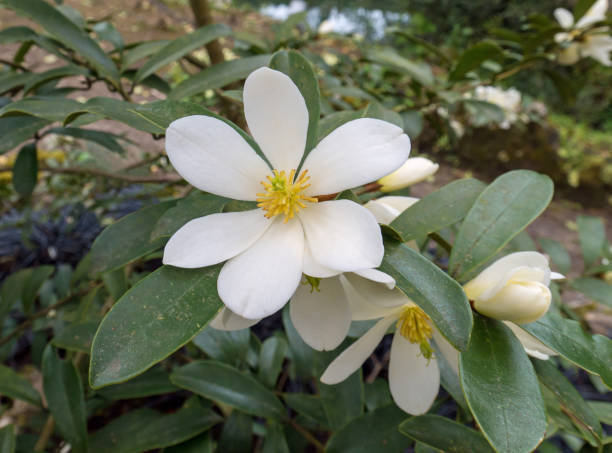
Southwest China is home to a large, evergreen shrub to a small tree that grows between 3600 and 7500 feet above sea level. It can grow to a height of 10-30 feet and a width of the same in the wild. Many people say that there have been wild specimens of models that are taller than 40 feet. As long as they stay dark green and tough, the leaves can grow up to 4 inches long. Flowers about 2 inches wide come from axillary buds on the stems in the spring. Hairs that are short and reddish-brown cover young twigs, leaf petioles, flower buds, and the young leaves of trees.
Magnolia Bubbles
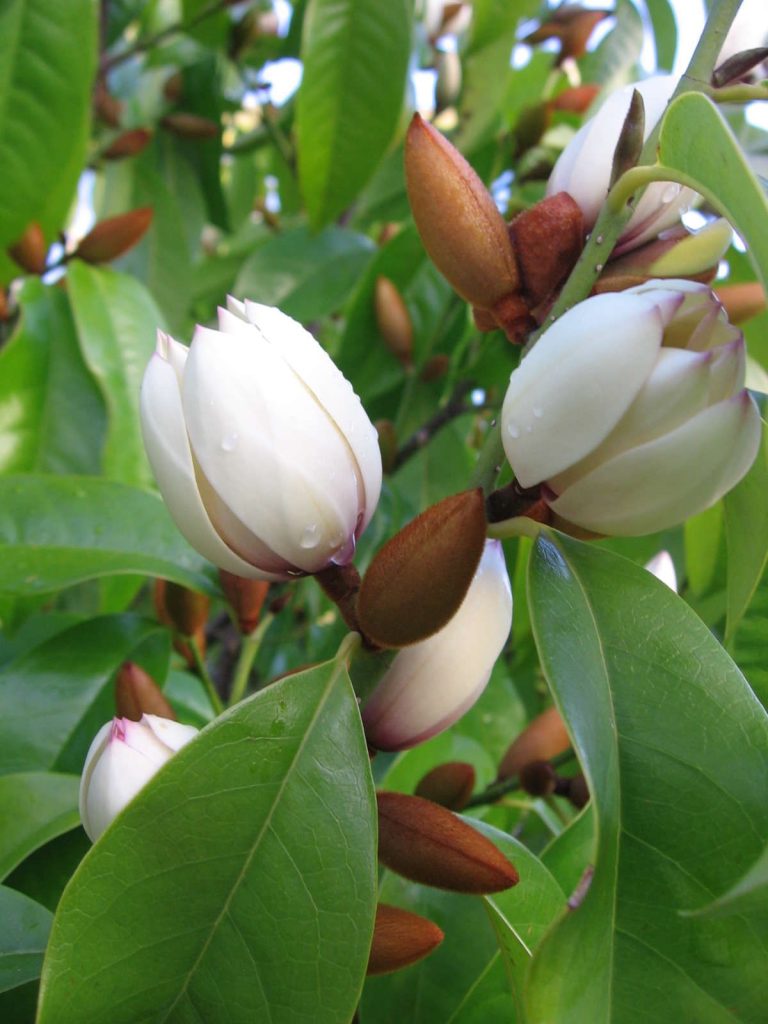
To create this stunning tree, Magnum doltsopa and Michelia figo were crossed. Pointy, glossy green leaves make “Bubbles” a beautiful plant. When it’s done growing, it will take on the shape of a small pyramid-shaped tree. White flowers with pale pink edges open in the late winter or early spring on this variety. They don’t have a strong odor, but there is some odor. Preparing the site can help ensure that the soil is moist, fertile, well-drained, and slightly acidic. Our recommendation is to fertilize in the spring, mulch in the fall, and water in the dry months, especially for established plants.
Magnolia Deciduous Trees
Anise Magnolia
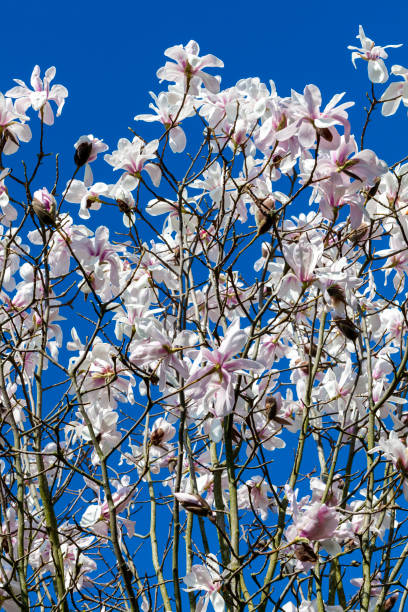
The anise magnolia has leaves resembling a willow tree or shrub, which gives it its name. It grows up to 30 feet. Compared to willow leaves, they are slightly wider but not as wide as the typical Magnolia leaf. This deciduous tree will bloom with white flowers with strappy petals. The golden yellow of autumn is a pleasing color.
Ashe’s Magnolia
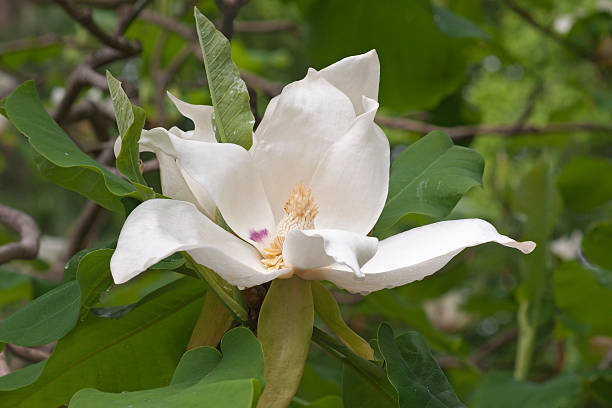
The white flowers, which have petals up to one foot long, bloom after the light-green leaves have emerged in the spring and are followed by the light-green leaves. Depending on how it is pruned, Ashe’s magnolia can grow to be either a large shrub or a small tree in size. It can grow up to 15-30 ft tall and 15 to 30 ft wide.
Bigleaf Magnolia
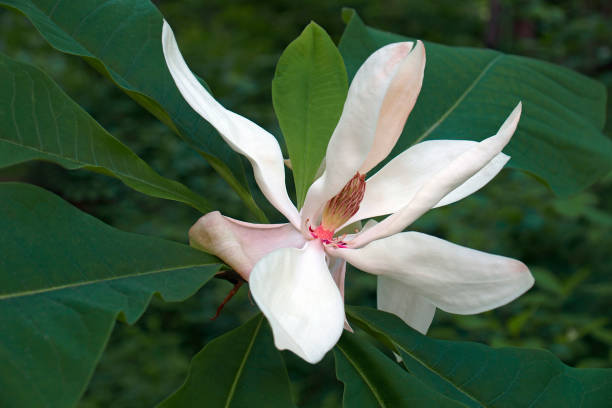
The bigleaf magnolia lives up to its name, with leaves that can grow up to 32 inches in length on mature trees. In general, it is a deciduous tree, though it can be somewhat evergreen in warmer climates. Typically appearing in May, the blooms are up to 10 inches across, white with purple petal bases, and can reach 10 inches in diameter. It can grow 30-40 ft tall and wide.
Cucumber Tree
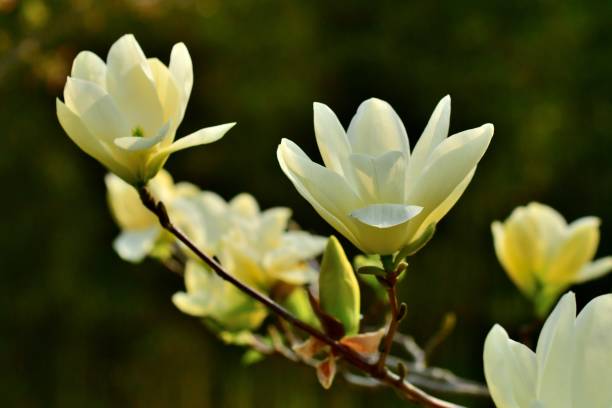
The fruits of the cucumber tree magnolia got their name because they resemble those of a cucumber. With its glossy, 10-inch-long leaves and large growth habit, this magnolia is the most cold-resistant magnolias. Still, its greenish, tulip-shaped flowers are only 2-inches across. As the fruits mature, they change color from green to red. This can be an excellent specimen tree in colder climates. It can grow 60-75 ft tall and wide.
Umbrella Magnolia
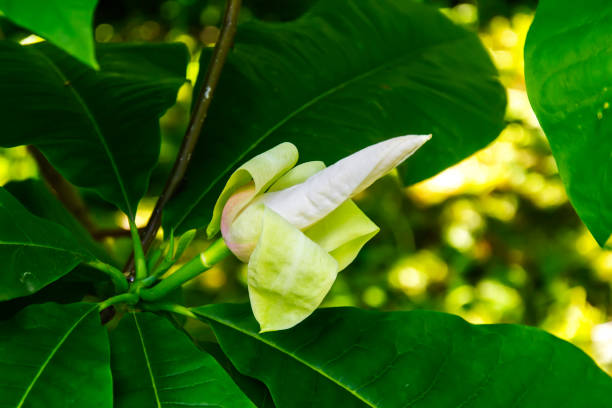
The umbrella magnolia gets its name from the enormous, glossy leaves that can grow up to 24 inches long and 10 inches across and droop down around the ends of the branches. It is native to Southeast Asia. In its native habitat, the understory forests of Appalachia, this is a small tree with multiple stems that thrives in a shady environment. Around late spring to early summer, the creamy-white flowers. Even though they are fragrant, they do not have a particularly sweet scent. It can grow to 15-30 ft tall and 15-30 ft wide.
Star Magnolia
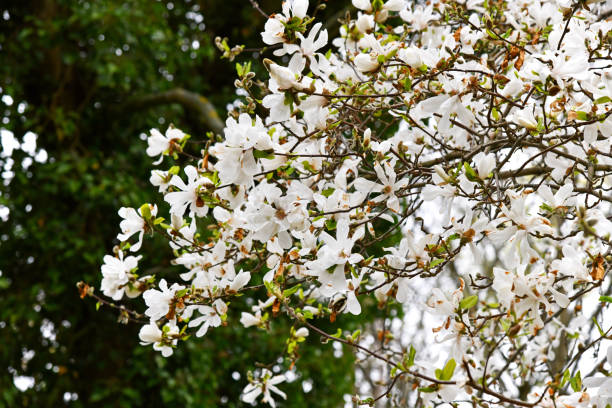
The star magnolia is a small deciduous tree blooming in late winter or early spring. Plant it in a sheltered location whenever possible to aid in flowering in the spring, as the buds are easily damaged by frost. It can grow 15-20 ft tall and has a 10-15 ft spread at maturity.
Saucer Magnolia
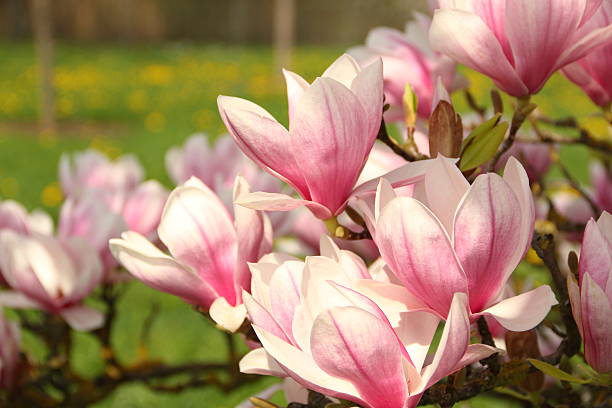
It’s a hybrid of the Yulan magnolia and the lily magnolia. Before the appearance of the leaves, white flowers with pink interiors are common in early spring. Flowers are light pink to deep purple in the many available cultivars. This is the most popular magnolia in the United States, also known as the tulip tree. It can grow to 20-25 ft tall and spread.
Loebner Magnolia
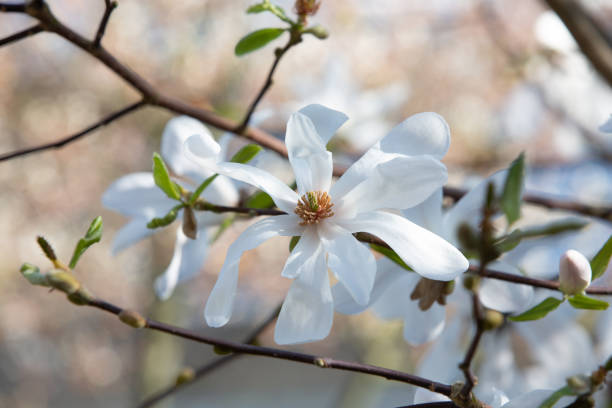
To create the Loebner magnolia, Kobus and star magnolias were crossed. Pruning can create a central leader in this small tree, which usually has multiple stems. Spring brings forth star-shaped pink and white flowers four to six inches wide and blooms before the leaves do. Compared to other magnolias, this one’s dark green oval leaves are shorter, only reaching a maximum of 5 inches in length. It grows up to 20-30 ft tall and spread.
Kobus Magnolia
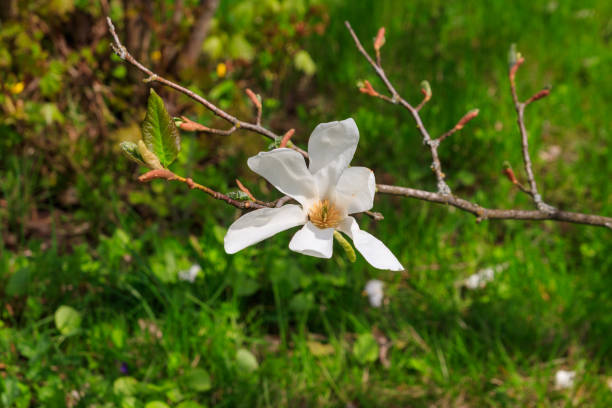
Kobus magnolia is a slow-growing species with white flowers that are tinged with pink before the leaves open. It also has large, dark green leaves. If you want early-season flowers, you’ll most likely plant a Japanese magnolia. It’s also called northern Japanese magnolia. These trees tend to have many trunks, but cutting them back to one will give them a more traditional tree shape. As a group, they make the Loebner Magnolia. It grows up to 25-50 ft tall, and 35 ft spread.
Smaller Deciduous Magnolia Varieties
Lily Magnolia
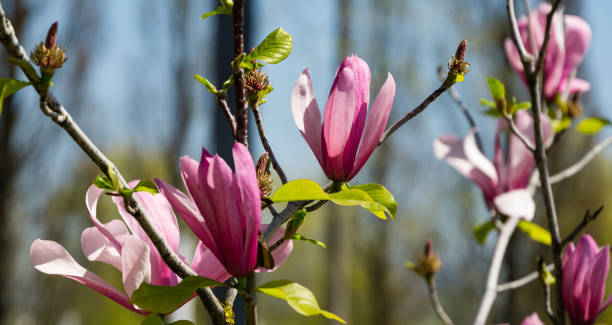
Magnolias are known as “lilies” because of their brightly colored flowers. Reddish-purple or pink flowers shaped like lilies bloom on this shrub in the early spring before the leaves have opened. “Nigra,” one of my favorites, is known for its richly hued flowers. Dark green elliptical leaves appear after flowering. The saucer magnolia can trace its ancestry back to this species. It grows up to 8-12 ft tall and wide.
Leonard Messel Magnolia
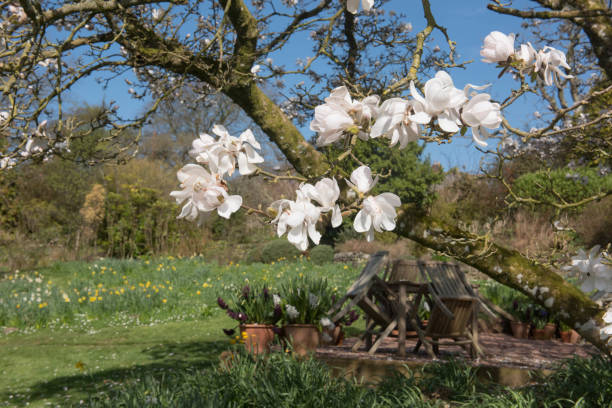
Magnolia loebneri, also known as Loebner magnolia, is a hybrid magnolia (M. kobus x M. stellata). It is a deciduous magnolia. Typically, it grows to about 20-30 feet tall and has a round crown. As a single-trunk tree, it is more common to see it. In St. Louis, white star-shaped flowers (4-6″ wide) with 10-15 petals appear in early spring before the leaves. A flower gives way to cone-shaped fruits that ripen to red in late summer. It releases individual red-coated seeds suspended on thin threads when they’re ready to eat. There are times when this hybrid doesn’t have fruits on it. Flat, medium green leaves up to 5 inches long. There are now a lot of hybrid cultivars on the market that have white flowers, blush-pink, lilac-pink, or pink.
